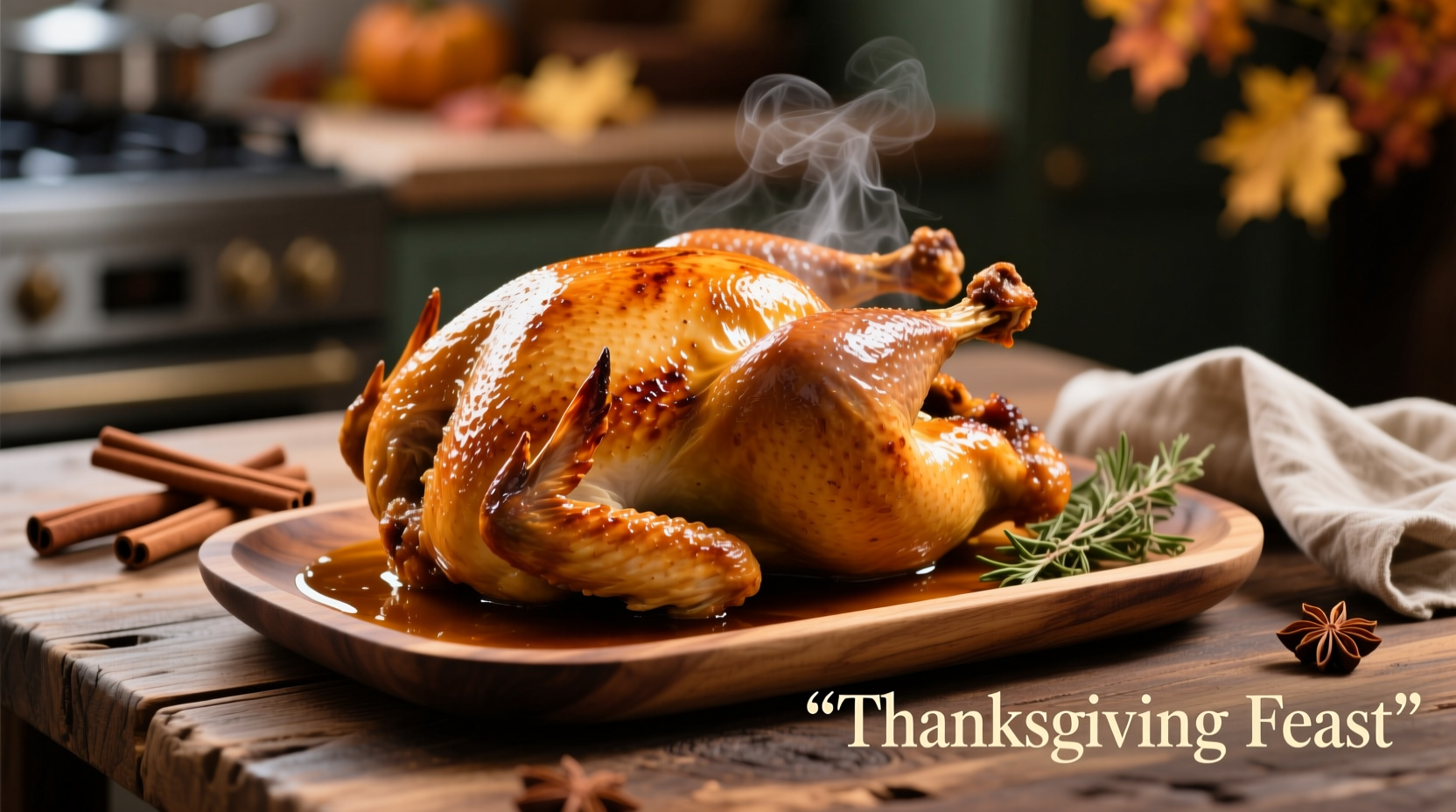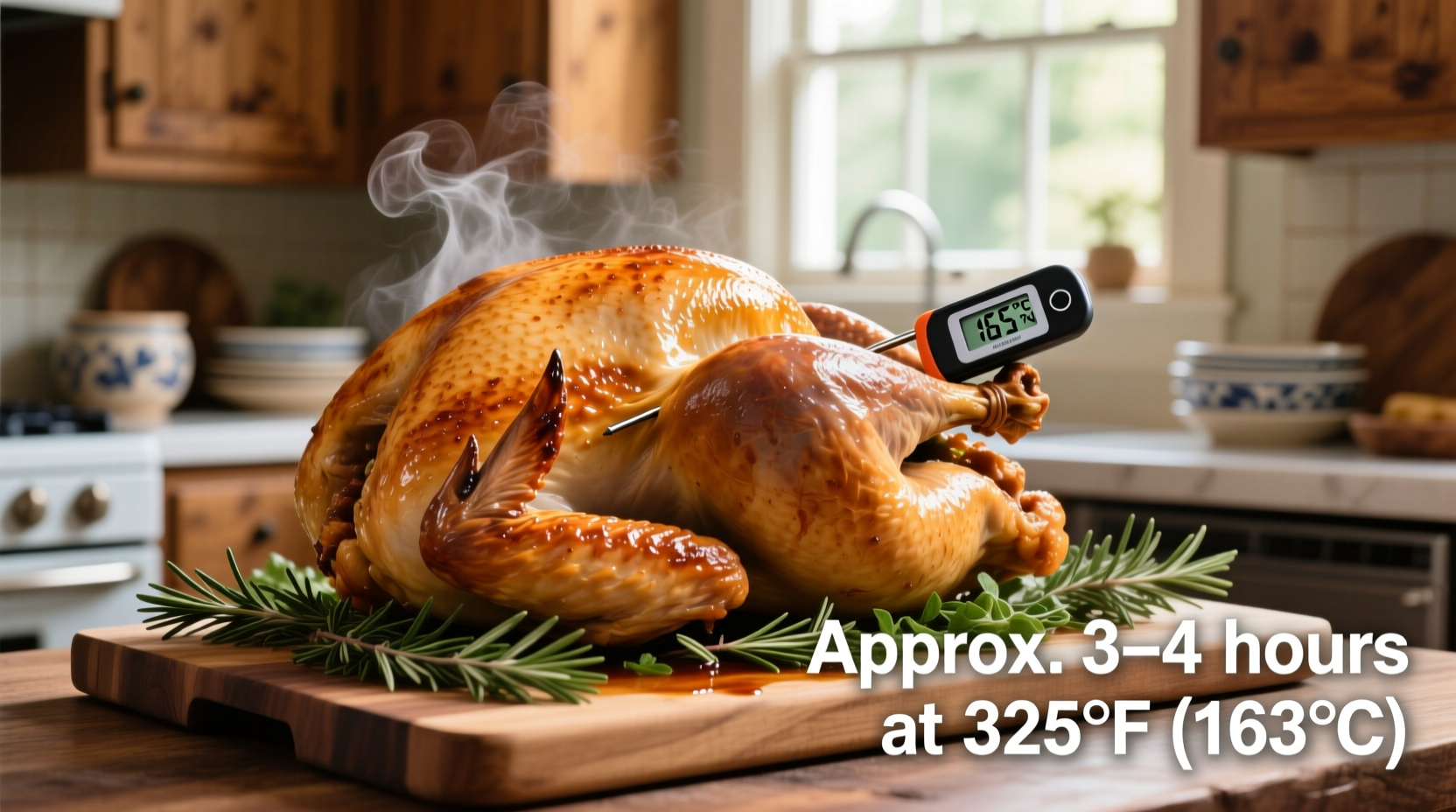Direct Answer: A turkey requires approximately 13 minutes per pound when roasted unstuffed at 325°F (163°C). For example, a 12-pound turkey takes about 2 hours 35 minutes to reach the safe internal temperature of 165°F (74°C) in the thickest parts of the breast and thigh.
Nothing compares to the aroma of a perfectly roasted turkey filling your kitchen. Whether you're preparing your first holiday feast or your fiftieth, getting the cooking time right makes all the difference between a succulent centerpiece and a dry disappointment. This comprehensive guide delivers precise timing information backed by food safety experts, so you can confidently serve a turkey that's cooked to perfection every time.
Before You Start: Essential Preparation Steps
Proper preparation sets the foundation for accurate cooking times. Rushing these steps leads to uneven cooking and inaccurate timing:
- Thaw completely: A frozen turkey adds 25-50% more cooking time. Allow 24 hours of refrigerator thawing per 4-5 pounds of turkey weight.
- Bring to room temperature: Remove turkey from refrigerator 1 hour before cooking for more even heat distribution.
- Pat dry thoroughly: Moisture on the skin prevents proper browning and extends cooking time.
- Season appropriately: Salt the turkey the night before for better flavor penetration without affecting cooking time.
Understanding Cooking Time Variables
While "13 minutes per pound" provides a good starting point, several factors significantly impact your turkey's actual cooking duration:
| Factor | Effect on Cooking Time | Practical Adjustment |
|---|---|---|
| Stuffed vs. Unstuffed | Stuffed adds 30-50 minutes | Add 4-5 minutes per pound for stuffed turkeys |
| Oven Accuracy | ±25°F variation changes time by 20% | Verify with independent oven thermometer |
| Dark vs. Shiny Pan | Dark pans cook 10-15 minutes faster | Reduce temperature by 25°F with dark pans |
| Convection vs. Conventional | Convection reduces time by 25% | Set convection ovens to 300°F instead of 325°F |
Step-by-Step Cooking Timeline
Follow this behavior-based timeline for foolproof results, whether you're cooking a small 8-pound bird or a large 20-pound turkey:
Phase 1: Initial Roasting (First 75% of Estimated Time)
During this period, avoid opening the oven frequently. Each peek adds approximately 5-7 minutes to total cooking time. The turkey should develop a golden-brown exterior while the interior slowly heats through.
Phase 2: Temperature Monitoring (Last 25% of Estimated Time)
Insert your meat thermometer into the thickest parts of both the breast and thigh, avoiding bone contact. Check temperatures every 15-20 minutes during this critical phase:
- Breast should reach 160-162°F (will rise to 165°F during resting)
- Thigh must reach 165°F for food safety
- Stuffing (if used) must reach 165°F

Phase 3: Essential Resting Period
Never skip this crucial step! Resting allows juices to redistribute throughout the meat:
- Small turkeys (under 12 pounds): 20-30 minutes
- Medium turkeys (12-16 pounds): 30-45 minutes
- Large turkeys (over 16 pounds): 45-60 minutes
During resting, the internal temperature typically rises 5-10°F, carrying the breast to the safe 165°F threshold. Cover loosely with foil to maintain warmth without steaming the skin.
Special Cooking Methods Compared
Different preparation techniques dramatically alter cooking times. The USDA Food Safety and Inspection Service provides these verified guidelines:
- Deep-fried turkey: 3-4 minutes per pound at 350°F oil temperature (never leave unattended)
- Grilled turkey: 11-13 minutes per pound with indirect heat at 325-350°F
- Smoked turkey: 30-40 minutes per pound at 225-250°F
- Spatchcocked turkey: 45-75 minutes total at 425°F (butterflied for faster, even cooking)
Regardless of method, always verify doneness with a food thermometer rather than relying solely on time estimates. The Butterball Turkey Talk Line confirms that visual cues alone cannot guarantee food safety.
Troubleshooting Common Timing Issues
Even with careful planning, unexpected situations arise. Here's how to handle them:
Turkey Cooking Too Slowly
- Cause: Oven running cooler than set temperature
- Solution: Verify with independent thermometer; increase temperature by 25°F if needed
Turkey Browning Too Quickly
- Cause: Oven running hot or turkey positioned too close to heating element
- Solution: Tent with foil; move to lower oven rack; reduce temperature by 25°F
Turkey Done Early
- Cause: Overestimation of cooking time or oven running hot
- Solution: Remove from oven, tent loosely with foil, and let rest up to 90 minutes before carving
Food Safety: Why Timing Matters Beyond Perfection
Following proper cooking times isn't just about quality—it's critical for safety. According to the USDA Food Safety and Inspection Service, undercooked turkey poses serious health risks:
"Poultry must reach 165°F internally to destroy harmful bacteria like Salmonella and Campylobacter. Visual cues like juice color or leg movement cannot reliably indicate doneness." — USDA Food Safety.gov
Using a digital instant-read thermometer eliminates guesswork. Insert it into the thickest part of the thigh without touching bone for the most accurate reading. Remember that temperature continues rising during resting, so remove the turkey from the oven when the breast reaches 160-162°F.
Planning Your Holiday Timeline
For stress-free holiday cooking, work backward from your serving time:
- Determine when you need to serve (e.g., 2:00 PM)
- Subtract resting time (e.g., 45 minutes for a 14-pound turkey)
- Subtract cooking time (e.g., 3 hours for a 14-pound unstuffed turkey)
- Subtract preparation time (thawing, seasoning, etc.)
- Add buffer time for unexpected delays (at least 30 minutes)
This backward planning approach prevents last-minute kitchen panic and ensures your turkey rests properly before carving.
Expert Tips for Perfect Results
Professional chefs use these techniques to guarantee success:
- Place turkey on a wire rack inside the roasting pan for air circulation
- Baste only during the last hour to prevent skin steaming
- Use a remote digital thermometer for continuous monitoring
- Insert aromatics under the skin rather than in the cavity for better flavor penetration
- Rotate the pan halfway through cooking for even browning
Remember that every oven behaves differently, and turkey size isn't the only factor affecting cooking duration. Trust your thermometer over the clock for the most reliable results.











 浙公网安备
33010002000092号
浙公网安备
33010002000092号 浙B2-20120091-4
浙B2-20120091-4